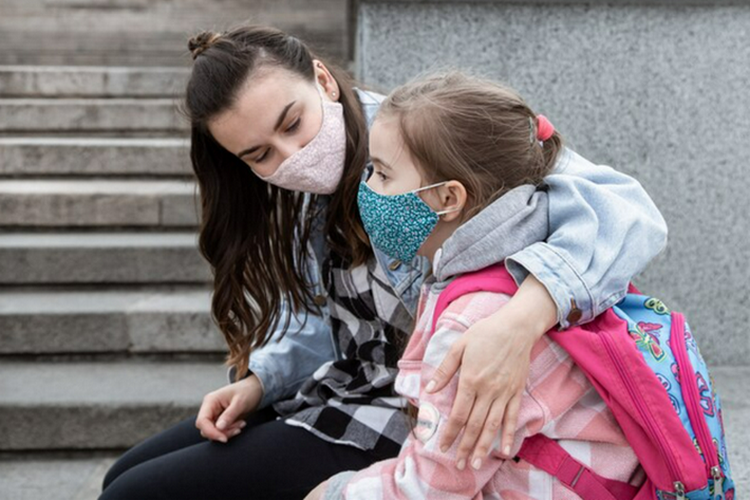


There is so very much that we all are trying to deal with this year in the midst of the Covid-19 pandemic. So much weighs heavily on our minds and hearts and behavior. When it comes to special needs parents dealing with autism and law enforcement, there sometimes seems to be even more that tips the scale to weariness and fear.
Special needs parents are facing challenging issues like never before. We are trying to keep our children engaged, happy, and calm while continuing to face school closures in the midst of a pause in services due to Covid-19. In some cases, group homes have disallowed visitors. Residents have been isolated from families for six months.

These are challenging times, as stress keeps building. Some parents worry that their children with autism are having a very hard time dealing with everyday life, especially during the Covid-19 pandemic. This brings out behavioral changes. Sometimes, behaviors can be extreme.
When someone with autism has disruptions to their routines, things can go downhill fast. Many parents have posted videos on social media revealing how hard it has been to deal with difficult behavior. We are seeing what challenging behaviors, meltdowns, and rage can do to the child or teens with autism and their families. It is heartbreaking.
Recently in Utah, a mother seeking help for her 13-year-old son called 911. She told the operator she needed help in getting her son to a hospital. She explained he has Asperger’s Syndrome, has trouble regulating himself, and that he was unarmed. The mother said he was having a “mental breakdown.”
Within minutes of law enforcement arriving, the mother says she heard voices yelling “Get on the ground.” Then she heard gunshots. Her son was shot. She thought he was dead.

In a press briefing, it was reported that officers were told to respond to a “violent psych issue” involving a juvenile. They said he “made threats to some folks with a weapon.” This is very different from what the mother described when she made the call asking for a crisis support team. What went wrong?
The boy was hospitalized for gunshot wounds to the abdomen. Autism parents know this will be traumatizing to him and his family. Recovering from such wounds is painful, and people with autism may not understand this pain. Whatever issues he was facing prior to that morning, they just got worse due to poor communication and perhaps a lapse in understanding autism.
This is not a unique situation, and many parents have faced traumatic situations between law enforcement and their children or teens with autism. A simple Google search reveals many dreadful stories involving individuals with autism who appear to be “out of control.” Why is this? There are positive stories too, but why are there stories with heartbreaking endings?

Are parents communicating fully with police officers about the needs of their child or teen when help is needed? Do police and other first responders have adequate training when it comes to autism? Are systems and protocols set up properly to assess intense situations where a person with autism is involved? Are those protocols actually working well or not?
There can be many concerns when it comes to people with autism who are exhibiting challenging behaviors. Whether or not law enforcement is called, escalation and aggression can lead to a dangerous situation. Sometimes, officers and other first responders do not know that the individual they were called about has autism or other special needs.
They may not be aware of the person’s verbal ability. When a person with autism is non-speaking, this complicates situations. It can appear that the individual is being defiant when he doesn’t (cannot) answer questions.
Jason Jimenez of the Elk Grove Police Department said that all officers go through some training in the academy to work with developmentally disabled individuals. The extent of that training and what’s involved is unknown.
With autism rates now at 1 in 54, and 1 in 6 children (age 3-17) diagnosed with a developmental disability (including autism) it becomes extremely important to have first responders highly trained in recognizing and interacting with individuals with ASD.
In some cases, when it is known that officers are going to encounter an individual with autism in an escalated situation, a Mobile Crisis Support Team may be called upon. In Sacramento, this means that someone from Sacramento County Mental Health is paired up with an officer responding to an ASD-related issue.

Jimenez stated that the most important thing a parent or caregiver can do when encountering police in a questionable or escalated situation involving their child or teen with autism is to be upfront.
“It’s like telling the ER a child’s allergies; you want to be quick and upfront. Give them the information they need,” said Jimenez.
It becomes critical for parents to communicate quickly with law enforcement about anything which triggered the meltdown or fear state. Also, parents/caregivers should alert police immediately if their son/daughter is non-speaking. Let them know how the person communicates.

Parents can request that first responder turn off sirens and flashing lights in their vehicles if officers are coming to the home. First responders must use effective and alternative ways to approach a person with autism in an escalated moment.
Additionally, police officers must properly assess objects carried or held by the person with autism; mistaking a toy train for a pistol can happen, but it shouldn’t. The consequences of such an assumption can be devastating.
In order to respond to the needs of the ever-growing autism population, police stations across the country have begun instituting special needs alert forms. Parents/caregivers fill out the documents available at police stations. They provide information to first responders about the individual: his/her diagnosis (if there is one), medications, behaviors, sensory issues, vulnerabilities, calming methods, and more.
It can greatly assist police and others so they don’t enter a situation blindly. It is crucial for parents to check with their local police stations to see if they are using such a form or perhaps the Smart911 app.
These forms can also help children with autism who elope; the forms give first responders information about the child so they have details at their fingertips in case of emergency. Call or google-search your local authorities to find out if they utilize a special needs registry or developmental disability emergency form. It goes by different names in different places. HERE is a sample.
Programs like Fly Fit (the first of its kind) buddy-up young people with autism and other developmental disabilities with police officers in exercise classes. The goal is to build community bonds while becoming familiar with one another through a fitness-based activity. This is yet one more way to spread understanding and compassion.
Law enforcement responds to situations where a person with autism appears out of control and potentially dangerous. Sometimes it’s parents who call; other times people in the community. And occasionally, an officer may spot a questionable situation in a public place and come across a person with autism who is exhibiting odd or challenging behavior. Everyone involved should strive to be clear and collaborative when communicating.
Finally, something equally important to keep in mind: if a person with autism appears ‘out of control,” then there is often an underlying reason for the dysregulation. It may not be “bad behavior.” Perhaps the action taken should not be based on trying to gain control of the person.
Maybe those involved can focus on remaining neutral and using calming measures to help uncover what upset the person and assist him in regaining composure.

Sacramento County Mental Health Support Team (916-874-6015)
Sacramento Sheriff’s Department (916-874-5115)
Public Information Officer, Sacramento County (916-874-7798)
Sacramento County Mental Health (916-875-7070)
Check out our Special Needs Resources HERE
Find other special needs blog posts HERE
Read Keri Horon’s personal blog HERE
Just enter your email address below and you’ll get an email every time we publish a new post!
Categories :
Tags :
Keri is a special needs parent and a veteran high school English and journalism teacher turned writer. She enjoys reading, hiking, gardening, cooking, traveling, wine tasting, and practicing yoga. Both she and her son love to create art. She has a passion for educating people on all things autism. Visit her blog at https://kerimehome.com.
View All PostsNotifications